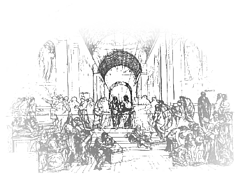
Copyright© 2000 by Bernd R. Fix. All Rights Reserved.









|
Java™-based development framework for PalmOS™ devices (PDAs) Copyright© 2000 by Bernd R. Fix. All Rights Reserved. |








|
|
How to write applications with the DynaWorks framework |

|
|
|
|||||||||||||||||||||||||||||||
|
|||||||||||||||||||||||||||||||
|
After you have downloaded the DynaWorks
package, you can install it on your local machine. I recommend you download the whole stuff,
that is either the dynaworks-2.0.zip or dynaworks-2.0.tar.gz file. To explain the directory structure and the files that are in the DynaWorks package, I use my own path settings as an example (these settings are also used in all the examples that come with DynaWorks). Of cource you can use your own directory structure - you don't have to rename them ;-) You only have to change all the cpl.bat files that come with DynaWorks to match your directory settings.
After you have extracted the DynaWorks package into the home directory, you will see the following directories beneath it:
|
|||||||||||||||||||||||||||||||
|
|
|||||||||||||||||||||||||||||||
|
|||||||||||||||||||||||||||||||
|
This tutorial will show you how to use DynaWorks for your own
application and database development needs. It assumes a good understanding of the
Java™ platform and the basic concepts of PalmOS™ programming. If you want to follow this tutorial "hands-on", you also need a running Java™ Micro Edition development environment on a Linux or Windows machine and a PalmOS™ device or a software emulator. The first chapter shows you a list of devices and J2ME implementations you need and some development tools you might want to work with. Although you can write, compile and link an application by just using command line tools, it makes a lot of sense to use a real IDE for DynaWorks. Following that is a short overview over the package structure in DynaWorks and the Table of Content at the end of this page will show you the chapters in this tutorial. Any comments, bugs reports, suggestions or contributions and sample apps are welcomed. Please mail all you want to share to me. |
|||||||||||||||||||||||||||||||
|
|
|||||||||||||||||||||||||||||||
|
|||||||||||||||||||||||||||||||
|
This version of DynaWorks is designed to work with the
J9 for Palm implementation from IBM (download from
here) and the KVM / CLDC
from Sun (download from here).
Make sure everything is setup correctly and that you can compile and run the examples
that come with these J2ME implementations. Application developed with DynaWorks will work on the following PalmOS™ devices that run the listed J2ME implementations; for making your development process easier, I recomment to use one of the listed IDEs:
|
|||||||||||||||||||||||||||||||
|
|
|||||||||||||||||||||||||||||||
|
|||||||||||||||||||||||||||||||
|
The DynaWorks framework consists of different sub-packages
that have their special purpose. You can even use some these parts individually (without
including the whole framework) - although there are some 'design links' between all these
components. The individual packages are:
|
|||||||||||||||||||||||||||||||
| The documentation is structured into the same sections as the framework itself; mainly the sections Application/GUI (DynaPage) and database and conduit handling (DynaDb). Whenever the documentation refers to these sub-packages, keep in mind they are part of the DynaWorks framework and share the same design principles (and restrictions) as the complete framework. | |||||||||||||||||||||||||||||||
|
|
||
|
||

|
|
|

|
||

|
||

|
||

|
||

|
||
|
|
||
Have fun, Bernd.